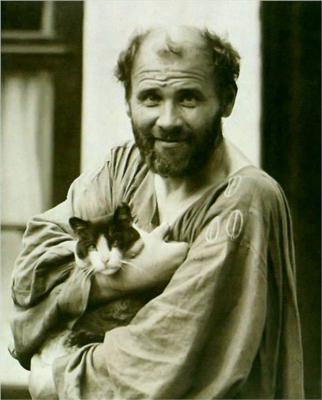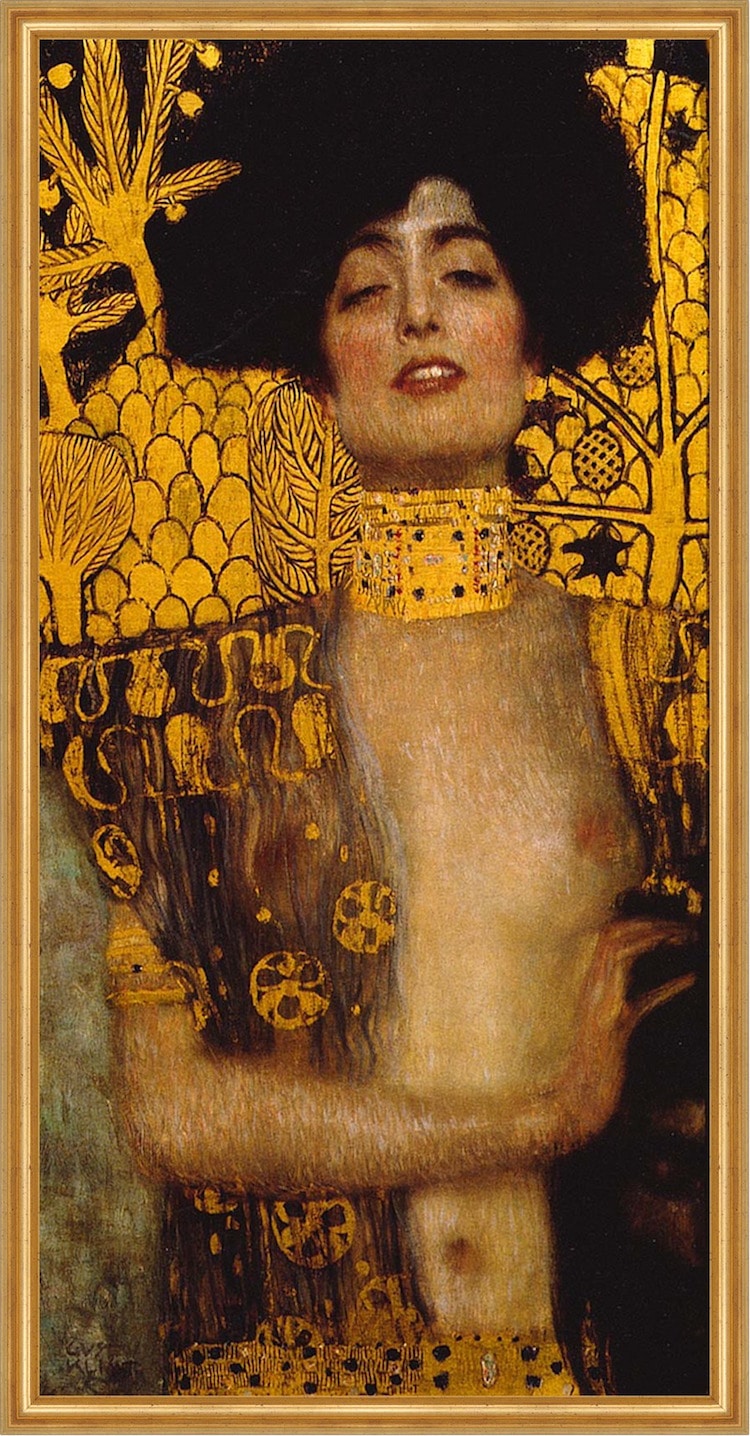Gustav Klimt
(1862-1918)

Gustav Klimt was born in 1862 in Austria on the outskirts of Vienna. They say that he was genetically predisposition to the arts at an early age and left normal school to attend the Vienna School of Arts and Crafts on a full scholarship. Coming from poverty and at such a young age, he was seen as very talented in the eyes of the academy. He received classical training that he accepted and focused on architectural painting later on. He actually wanted to become a drawing teacher early in his career but his horizons broader when his talent earned various small commissioned while he was still in school, and when he graduated he opened a studio with his younger brother Ernst and a friend named Franz Masch.
They called themselves the Company of Artists and focused on murals. Then in 1890 the Klimt brothers and Masch joined the Vienna Artists Association, a group that controlled the majority o the exhibitions in the city. Having a successful career with his brother, who died alongside his father, Klimt changed his style to the style that we love and know him for. Taking him on a different path.


Photo: © 2015 Neue Galerie New York
Klimt was influenced by Jugendstil which was the Art Nouveau trend happening in Germany. Jugendstil means “Young Style” and the style was centred around floral motifs, organically inspired lines and eventually moved towards abstraction and functionalism. It became important for Expressionists in Germany and Austria who were creating new visions of the modern subject.
Klimt also was a founding member of the Vienna Sezession group in 1987. This group was given to various groups of German and Austrian artists in the 1890s who seceded from official academic art institutions in order to found new schools of painting. The first was in Munich in 1892. The connection with Klimt’s paintings and the art nouveau movement was known as the Vienna Sezession in 1897
Klimts paintings were often seen as sensual and erotic and had a jewelled effect (like The Kiss). His paintings are characterized by academic forms that are obscured by massed repetitive decorative elements such as gold backgrounds and frames. He also loved to draw women specifically and never drew a self-portrait because it was the feminine that was so magical for him to draw. That was where his interest was. He would draw the feminine in a sensual, erotic, powerful way.

Judith and the Head of Holofernes and the kiss are two of my favourite works of his. I love his use of colours and the looks on the faces of the women that he draws. The decorative and colourful tone of the overall paintings really put me in awe of the drawings and makes me idolize his style. I feel that the colour and expressions are powerful and sensual at the same time.

Sources:
Gombrich, E. H. (1966). The story of art. New York: Phaidon Publishers; distributed by Oxford University Press.
Klimt, Gustav. (2018). In Helicon (Ed.), The Hutchinson unabridged encyclopedia with atlas and weather guide. Helicon. Credo Reference: https://ezproxy.capilanou.ca/login?url=https://search.credoreference.com/content/entry/heliconhe/klimt_gustav/0?institutionId=6884
Klimt, Gustav. (2018). In Gale Cengage Learning (Ed.), Gale biographies: popular people. Gale. Credo Reference: https://ezproxy.capilanou.ca/login?url=https://search.credoreference.com/content/entry/galegbpp/klimt_gustav/0?institutionId=6884
Photo Reference:
https://www.biography.com/artist/gustav-klimt#:~:text=Born%20in%201862%2C%20Austrian%20painter,Portrait%20of%20Adele%20Bloch%2DBauer.
Judith II, 1909, by Gustav Klimt (1862-1918), 178×41 cm, Detail. (2014). In Bridgeman Images (Ed.), Bridgeman images. Bridgeman. Credo Reference: https://ezproxy.capilanou.ca/login?url=https://search.credoreference.com/content/entry/bridgemandeag/judith_ii_1909_by_gustav_klimt_1862_1918_178x41_cm_detail/0?institutionId=6884
Lady with a hat and a feather boa, by Gustav Klimt (1862-1918). (2014). In Bridgeman Images (Ed.), Bridgeman images. Bridgeman. Credo Reference: https://ezproxy.capilanou.ca/login?url=https://search.credoreference.com/content/entry/bridgemandeag/lady_with_a_hat_and_a_feather_boa_by_gustav_klimt_1862_1918/0?institutionId=6884
Nuda Veritas (Naked truth), 1899, by Gustav Klimt (1862-1918), oil on canvas, 252×56 cm. (2014). In Bridgeman Images (Ed.), Bridgeman images. Bridgeman. Credo Reference: https://ezproxy.capilanou.ca/login?url=https://search.credoreference.com/content/entry/bridgemandeag/nuda_veritas_naked_truth_1899_by_gustav_klimt_1862_1918_oil_on_canvas_252x56_cm/0?institutionId=6884
https://www.biography.com/artist/gustav-klimt